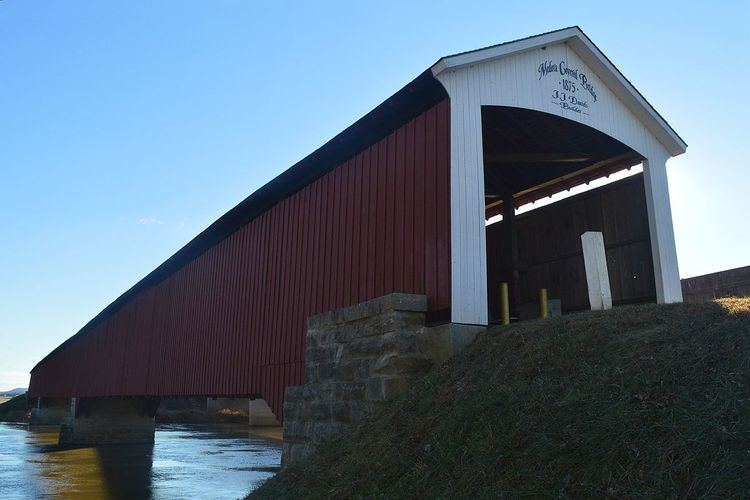Architectural style Burr Arch Truss Opened 1875 Added to NRHP 19 September 2007 | Architect Joseph J. Daniels NRHP Reference # 07000977 Bridge type Burr Truss | |
 | ||
Address IN-235, Vallonia, IN 47281, USA Hours Open today · Open 24 hoursFridayOpen 24 hoursSaturdayOpen 24 hoursSundayOpen 24 hoursMondayOpen 24 hoursTuesdayOpen 24 hoursWednesdayOpen 24 hoursThursdayOpen 24 hours Similar Bell Ford Post Patented, Jackson Covered Bridge, Williams Bridge, Starve Hollow State Rec, Cumberland Covered Bridge | ||
Medora covered bridge aug 28 2014
The Medora Covered Bridge is the longest spanning (a part of a bridge between the uprights supporting it) historic covered bridge in the United States.
Contents
- Medora covered bridge aug 28 2014
- Medora covered bridge undergoing restoration
- Location
- History
- References
Medora covered bridge undergoing restoration
Location
The Medora Covered Bridge is located in Carr Township in Jackson County, Indiana and crosses the East Fork of the White River running parallel to State Road 235. It is approximately one mile east of Medora and nine miles southwest of Brownstown.
History
The Medora Covered Bridge was built in 1875 by J.J. Daniels at a cost of $18,142.00 and took nine months to build. The bridge was covered to protect the truss from the elements. Before the bridge was built people crossed the river by ferry.
It has been reported but not verified that at one time there was wooden railing down the middle of the bridge separating the two way traffic. As the vehicles became wider, the railing was removed and it was then one way.
Until 1935 the bridge carried U.S. Route 50 when it (U.S. 50) was moved four miles to the north.
In 1968 the bridge was scheduled for demolition when the new modern parallel bridge was to be opened but was saved by an order from then Governor Whitcomb in 1971.
A modern parallel bridge was opened in 1973. The covered bridge was closed to vehicular traffic at that time.
In 2007, the bridge was added to the National Register of Historic Places
In June 2011 a rehab of the bridge was completed. The original truss remained in place with a few repairs. The cedar shake shingles, siding (Seven of the original boards, identified by square nail holes, were placed on the north side of the far west end.), sheeting (or sheathing) and some of the rafters were replaced. Except for the shingles, most of these items were original but badly deteriorated. Much of the flooring was replaced but was not original.
